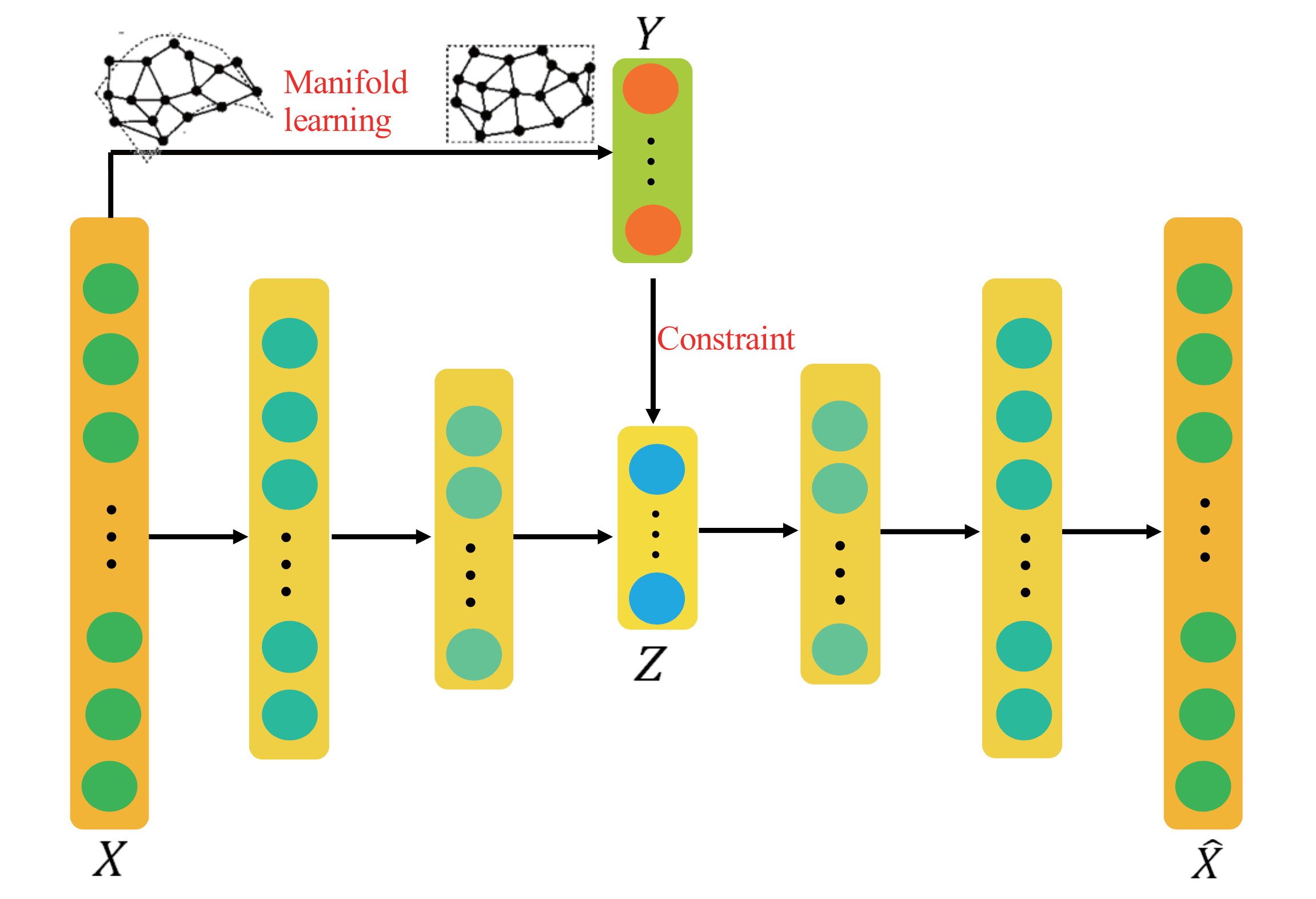Hyperspectral anomaly detection is an important task in the remote sensing domain. Recently, researchers have shown great interest in deep learning-based methods because they can learn hierarchical, abstract, and high-level representations.
However, the latent features learned from the autoencoder (AE) are not always able to reflect the intrinsic structure of hyperspectral data because the locality property is not considered during the learning process.
In order to address this problem, a novel manifold constrained AE network (MC-AEN)-based hyperspec- tral anomaly detection method is proposed by a research team led by Prof. Dr. LU Xiaoqiang from Xi'an Institute of Optics and Precision Mechanics (XIOPM) of the Chinese Academy of Sciences (CAS).

Flowchart of our proposed MC-AEN. (Image by XIOPM)
First, the manifold learning method is employed to learn the embedding manifold. Then, the latent representations are learned by an AE network with the learned embedding manifold constraints to preserve the intrinsic structure of hyperspectral data.
Finally, the reconstruction errors are calculated to detect anomalies. The global reconstruction error from MC-AEN and the local reconstruction error from the learned latent representations are combined to fully utilize the learned knowledge for better detection performance.
They test the proposed algorithm on three different real data sets. Experimental results on these three data sets show the superiority of our proposed method.
(Original research article “IEEE TRANSACTIONS ON GEOSCIENCE AND REMOTE SENSING” (2020) https://doi.org/10.1109/TGRS.2019.2944419)


